Motorcycle Investor mag
Subscribe to our free email news
Profile – Ducati SportClassic range
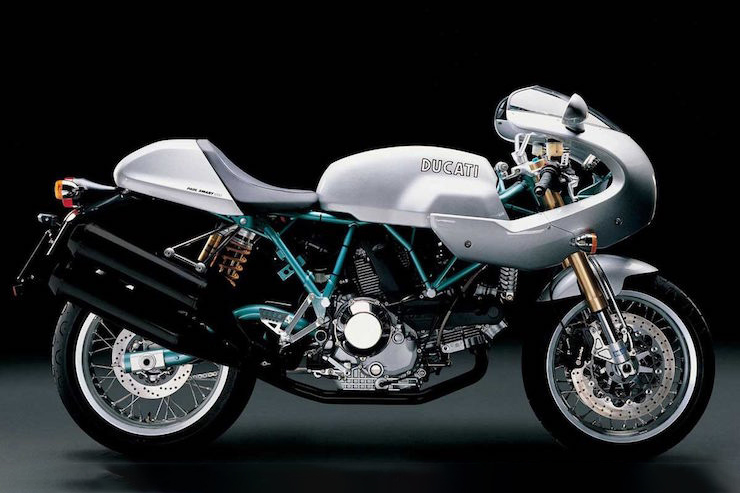
by Guy ‘Guido’ Allen, Nov 2020

Ahead of the curve
Ducati stuck its neck out by going retro before retro was a ‘thing’
If you look at the history of the motorcycle industry, you’ll soon understand that the terms ‘Ducati’ and ‘financial pickle’ are not mutually exclusive. The company has been through a few peaks and troughs over time (and is hardly alone in that), but the period over a decade ago when the company decided to re-invent its history and hopefully develop a retro market along the way was a classic (ahem) case of unlucky timing.
Circumstances conspired against the idea. For a start, the then recently-launched 999 hero sportsbike was copping a caning mostly for its styling. That was done by Pierre Terblanche, who I reckon got a bum rap. His most public challenge was coming up with something to follow on from Massimo Tamburini’s exceptional 916-998 series. This is like saying, “Mate, Michelangelo’s stuff was pretty good, but the paint on the ceiling of the Sistine Chapel is looking a bit flaky and we want something better. Can you do it?” Terblanche should have run away.
To his eternal credit he didn’t, but the launch of his less beautiful 999 design coincided with an incipient worldwide financial crisis that saw Ducati and others scrambling to stay afloat. In isolation the 999 was a looker, but beside the 916 it looked a bit, well, frumpy. Frankly, anything would.
Combine the two things and you can see how Terblanche really didn’t get a fair go.
He also styled Ducati’s SportClassic range, which was a bit of a financial disaster on its own. Was that the designer’s fault? No. Unlikely. Unless I’m misinformed, he had nothing to do with the world financial crisis, and I suspect was inevitably forced to make compromises by other areas of the company – marketing, engineering, finance…you name it.
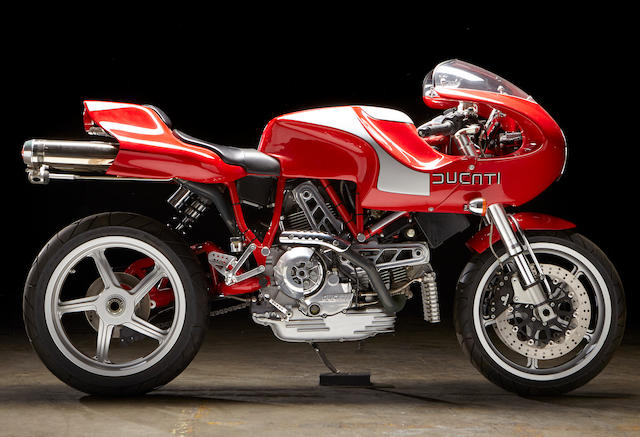
To understand where the SportClassic range (I hate these joined brand words) came from, you need to look just a few years earlier to 2001 and the launch of the MH900e Evoluzione Sports (above) – aka a modern Mike Hailwood replica. Access to the world wide web was still a fairly new thing for much of the world population, but you could only order it online, preferably at your Ducati dealership. Just 1000 were to be made and it was expensive – around 15,000 Euro. In the end, the numbers grew to 2010
The first batch of 1000 sold out instantly (despite all the hurdles – price, anything resembling details or reliable delivery dates) and garnered huge publicity for Ducati. Despite the price, I suspect it was sold at a loss. At the time, it was big news that someone used the interweb thingy to sell out an entire model – of anything. But here’s the key thing: it (the bike) was gob-smackingly beautiful and clear proof Terblanche could style a stunner. I, and many others, will forgive him almost anything for that one act.
So in a way Ducati had re-established there was definitely worldwide interest in a modern take on retro bikes. With the benefit of 20/20 hindsight, it would have been perfect if the company was able to roll out a derivative series into showrooms across the world, from that moment. The interest was there.
However, the turn-around was too slow and the timing unlucky. The range was previewed at the 2003 Tokyo Motor Show (two years down the track) for 2005 production and starting with the 2006 model year. Really, they lost half a decade on the initial momentum, whatever it was worth. It also coincided with the Global Financial Crisis hitting hard. Plus, the steep pricing was an issue.
And here's the second issue: while lots of examples of retro motorcycles had been launched prior to this, going back at least to the 1980s, at the time of Ducati's SportClassic launch there wasn't an industry-wide 'ecosystem' for them. That was to come later, as the international economy improved post-GFC and we saw the re-emergence of retro and cafe racers into the mainstream.
To make matters even more interesting for the would-be buyer, there were a few generations with alterations on the fly. Ducati expert and author Ian Falloon tells us: The problem with the SportClassic is that in 2006 they made three types, and in 2007 two types. They were quite different the second year. In 2008 there was another series of two (different again) and in 2009 only the GT1000 (different again). Not well documented unless you have a Complete book of Ducati or a Ducati Story sixth edition.
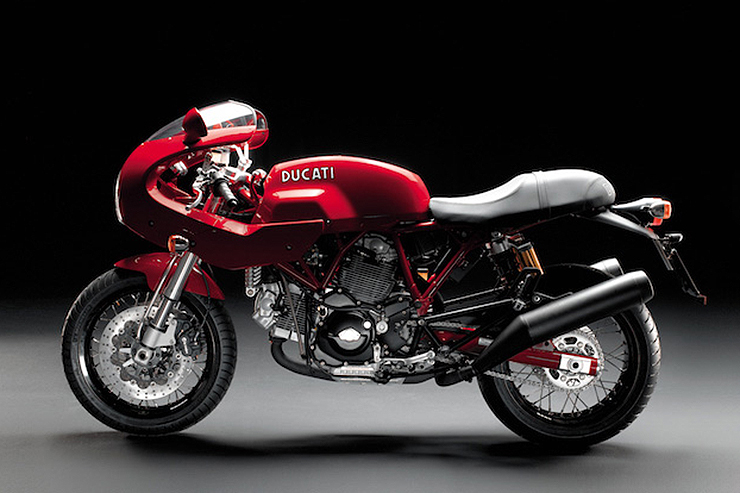
Ultimately there were four key models – the Sport 1000, the Sport 1000S (above), the Paul Smart Limited Edition (2006 only) and the GT1000. Model years ran from 2006 through to 2010. Note the irony? The whole thing shut down just a little before retro was to develop into a big market sector.

The intention was the Sport 1000 (above) harked back to the lovely 750 Sport naked of the seventies, the Paul Smart to the now terrifyingly expensive and rare green frame SS, the Sport 1000S offered a less-pricey middle ground with the sporty fairing, and the GT (below) was more a gentleman’s mount with a comfortable seating position.
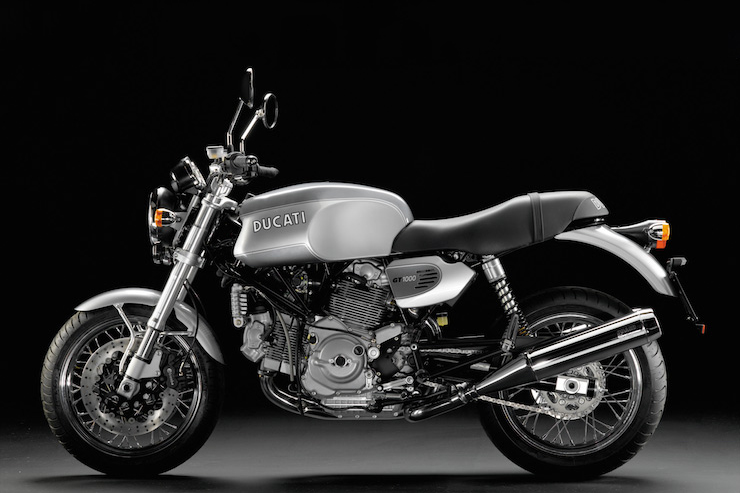
Under the paint, the four machines were running similar spec, though there were a lot of variations and short-run models along the way. Ducati had put some serious investment into this series, with a bespoke steel trellis frame and a significantly modified 992cc version of the air-cooled two-valve L-twin engine series, with fuel injection. That was matched to a six-speed transmission.
The package claimed all of 92-95 horses, but that wasn’t the point. Anyone who’s ridden later model air-cooled twins of this generation will know their heart is bigger than their specs. They’re punchy, with a broad mid-range, and can be spectacularly quick on the road in the right hands.
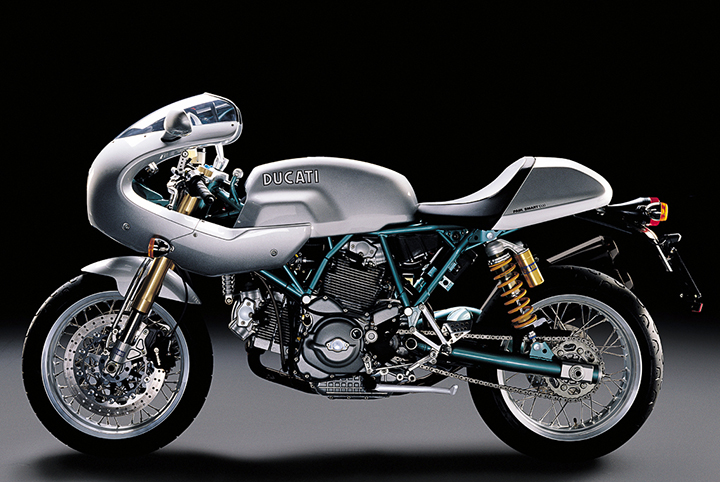
Ducati’s intention was most people would buy the Sport 1000, though secretly lusting after the Paul Smart replica (above) – which was super-expensive. However a contracting world economy thinned out the customer base. Their experience was that the people who still had the spare cash for these bikes – none were cheap and all were intended as Sunday toys – were older and struggled with the head-down and bum-up riding position.
It was that awkward moment when punters discover that the head says you’re 18 but the body has aged. That made bringing on the GT, with its much more friendly riding position, a priority. It wasn’t enough to save the day.
And here was the other clanger: the two stacked right-hand-side mufflers on the Paul Smart. They looked wrong. Remember me mentioning Terblanche having to deal with marketing, engineering, accounts et al? This was the impact. While the motorcycles looked lovely, the pipes were a shocker. It was sorted with other models, which ran a simple muffler either side.
Just as a matter of interest, look up Ian Falloon’s lovely The Art of Ducati book. In there is a Smart with a slim Termignoni two-into-one system – it completely transforms the looks.
As a series, the SportClassic range was well-engineered and well-finished. Ducati was trying hard to please and develop what it saw as an important new market and it shows.
I’ve ridden the Paul Smart and the GT and, while the former is a sharper handling package, the GT is much easier as a hop-on-and-enjoy ride.
Braking is sharp for what it is, steering light, and power is more than adequate. The bonus is any of them look good, and traditionalists will love the wire-spoke laced wheels.
Something that’s striking about all the models in the range is that, while they don’t have what was then Ducati’s state-of-the-art performance kit on board, they are a quick and thoroughly engaging ride.
As for long-term value, the Paul Smart is a limited edition (2000 made) and 105 are said to have been sold here. Maybe more got shipped over when the mining boom was at its peak. It’s the premium model and the one to have. However there is confusion over their value.
My second pick is easily the Sport 1000, if you can find one. Original 750 Sports have done very well over time and a well cared-for 2000s tribute should hold its value.
GTs are a harder sell. Yes, Ducati has a GT tradition, but in the collector market glam and a connection to sport is king. Buy one at the right price, and you’ll have a great toy and this is probably the pick of the range if you actually want to use it!
One thing that struck me is these things are definitely on the collector radar overseas. I doubt prices are about to go nuts, but a well cared-for example should hold its value. We’re seeing Sport owners asking in the Au$20-30,000 range – around $5k less for a GT and around $10k or more for a Smart replica.
In an ideal world, you’d have the respected and elderly original model and the SportClassic version side-by-side in your shed. One to ride, and the other to gloat over and kick into life for a spin on a particularly nice day. Maybe that’s what Ducati aimed for, and it’s a pretty good idea…
***
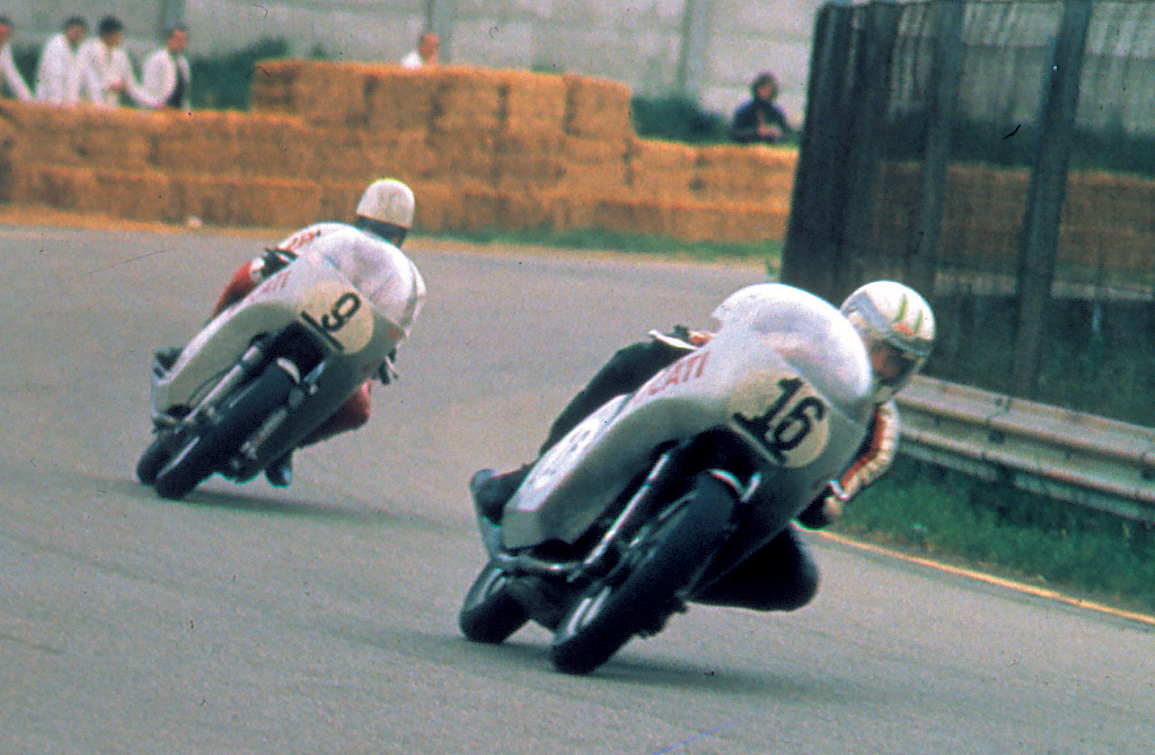
Who’s Paul Smart?
Former UK racer and motorcycle dealer Paul Smart effectively put Ducati on the international road racing map by winning the 1972 Imola 200 with a GT750-based machine, which in turn was the inspiration for the SS series. Over the years he had high-profile rides with Triumph and Yamaha. He married fellow racer Barry Sheene’s sister, Maggie.
(The pic above shows Paul Smart and team-mate Bruno Spaggiari.)
SPECS:
Ducati SportClassic Paul Smart LE
ENGINE:
TYPE: Air-cooled, two-valves-per-cylinder, 90-degree V-twin
CAPACITY: 992cc
BORE & STROKE: 94 x 71.5mm
COMPRESSION RATIO: 10:1
FUEL SYSTEM: Marelli fuel injection, 45mm throttle bodies
TRANSMISSION:
TYPE: Six-speed, constant-mesh,
dry multiplate cluch
FINAL DRIVE: Chain
CHASSIS & RUNNING GEAR:
FRAME TYPE: Steel trellis frame
FRONT SUSPENSION: 43mm USD fork
REAR SUSPENSION: Left-side shock-absorber with full adjustment
FRONT BRAKE: 320mm discs with two-piston calipers
REAR BRAKE: 245mm disc with single-piston caliper
DIMENSIONS & CAPACITIES:
DRY WEIGHT: 179kg
SEAT HEIGHT: 825mm
WHEELBASE: 1425mm
FUEL CAPACITY: 15L
WHEELS & TYRES:
FRONT: wire spoke 3.50x17 with 120/70R17
REAR: wire spoke 5.50x17 with 180/55R17
PERFORMANCE:
POWER: 68kW @ 8000rpm
TORQUE: 91Nm @ 6000rpm
Good
Well-finished
Rare
Fun to ride
Bad
Values hard to judge
-------------------------------------------------
Produced by AllMoto abn 61 400 694 722
Privacy: we do not collect cookies or any other data.

Archives
Contact




